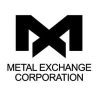Performance Management
What should be a powerful tool for shaping a group of individuals into a committed workforce dedicated to continuous improvement, often falls short, and, in worst cases, can actually cause employee motivation to deteriorate. Don’t let haphazard processes and poorly developed systems undermine the performance appraisal effort. We’ll layout performance appraisal best practices and pitfalls in this article. The difficulties associated with any performance management system are correctable, once identified. The trouble can usually be found in one of the following areas:
- Divergent goals and purposes
- Appraisal forms
- Implementation
- Appraiser skills
Divergent Goals and Purposes
Performance management is so widely used because of its scope and variety of purposes. These divergent goals can be grouped into two very broad categories: administrative and developmental goals. Decisions regarding salary, bonuses, promotions, layoffs, demotions, and transfers fall into the administrative category. Developmental goals consist of the many ways managers attempt to enhance employee motivation and ability.
These divergent objectives tend to undermine the appraisal’s effectiveness. The boss and direct report must put performance problems under a microscope, searching out causes and solutions. However, the direct report, knowing that administrative decisions — such as salary increases — are also on the line, minimizes disclosure of negative information and accentuates only the positive.
To address this problem, some companies keep administrative and developmental discussions separate. In their initial discussion, manager and employee focus on performance strengths and improvement areas, jointly creating a developmental action plan. In a second meeting several weeks later, the boss discusses pay increases and bonuses tied to performance. Unfortunately, such a brief separation does little to resolve the candor problem; the employee is frequently still cautious and guarded about disclosing or exposing any weaknesses.
Other organizations maintain two separate systems, usually a quantitative, goal-oriented approach to focus on what an employee has accomplished, and an entirely independent, competency-oriented process to address how each employee performs. The former determines results and compensation; the latter improves performance through feedback and developmental initiatives.
Unfortunately, this approach can dilute the payoff of a performance management system. Combining the two systems reveals a cause-and-effect connection between what is or isn’t being accomplished and why (i.e., competency strengths and improvement areas).
Separate systems diminish this capability. Separate systems can also hinder promotional decisions. Meeting or exceeding goals in a lower-level position says nothing about one’s command of the skills needed for a higher position. Likewise, while a competency review can indicate one’s potential for promotion, it will not determine if the person is sufficiently goal-driven to produce required results. A composite of goals and behavioral standards facilitates coaching and problem solving, and enhances promotion decisions. In addition, “total” performance in most organizations is defined as what the employee accomplishes and how he/she does it.
Best Practice: Conduct Regular, Ongoing Performance Reviews
We advocate a performance management cycle in which managers and employees review goals and competencies on a recurrent basis throughout the year, alleviating the conflict created by the divergent purposes of performance management. This also allows the boss to move an employee toward improved performance. The employee is more open and candid, secure that if performance is managed during the year, the review when compensation and promotion decisions are made will most likely be positive.
Appraisal Forms
Poorly constructed forms can actually prevent good appraisal discussions by including content that is subjective and ambiguous. A brief version of such a form is shown in Figure 1 below. Ambiguous and ill-defined rating factors, such as Makes Good Decisions, Planning and Organizing, and Positive Attitude, force managers and employees to decipher what is intended.
Does Good mean timely, accurate, logical, or all these things? By combining dissimilar terms like Planning and Organizing, the form can actually force a bad choice, as when rating an effective organizer, who is dismal at planning. Positive Attitude is also unclear. Attitude is something within someone’s head and requires the boss to judge personality, rather than observe behavior.
The subjectivity and ambiguity of terms such as Outstanding and Exceeds Requirements, generates performance reviews that lack validity, practicality, and value.
Best Practice: Effective Form Structure
A good performance management form should have at least four sections to provide adequate structure and guidance:
- A section for listing business goals for the appraisal period. This is what the employee will ideally accomplish.
- A section devoted to behavior rating factors, standards, or competencies. This is how the employee will go about achieving goals.
- A development planning section specifying behavior improvement goals and development actions.
- An administrative section requiring some sign-offs, showing that the employee received the appraisal and the boss acknowledged it.
Each section should provide guidance on a performance management cycle of planning and reviewing performance and conducting the annual appraisal.

Best Practice: Prepare Clear Goals
Well-written goals enhance the impact of performance appraisal. Increase clarity and reliability by following this simple formula for writing goals: Action + Object + Measurement Method. Use as many measurement methods (quality, quantity, cost, and timelines) as possible. For example: Increase (Action) production (Object of the Action) this year (Time Line) by 10% over last year (Quantity) while keeping reject rate to 1:1000 (Quality) and incurring no overtime (Cost).
Best Practice: Present Observable & Uni-Dimensional Rating Factors
Competencies should be written in clear, behavioral terminology so that the employee knows what “effective” performance looks like and what must be done to improve performance. Break statements into a series of uni-dimensional elements that captures a single behavioral event.
Best Practice: Provide Clear Rating Scales
Use a simple three-part response scale for rating quantifiable goals: Did not meet goal, Met goal, Exceeded goal. Motivate high achievers with a fourth response, known as a “stretch goal.” The stretch goal rating accommodates exceptional levels of quality, quantity, cost, or timelines, and is stated as Met or exceeded stretch level of performance.
Best Practice: Use a Continuous Performance Management Cycle
Ideally, a good form will help drive a continuous performance management cycle. At the beginning of the appraisal period, employee and boss plan performance, setting business and developmental goals and clarifying behavioral expectations. They keep on track by regularly reviewing performance and discussing areas where improvement is needed. At the end of the appraisal period, the employee and boss discuss overall performance, and the entire process begins again.
Implementation
As with any management initiative, a new approach to performance management will meet some opposition. That’s why the implementation or “sell-in” period is so critical. Emphasize the benefits of the new system while minimizing any negative factors.
Best Practice: Do It, Fix It, Try It
Start by emphasizing that good systems can always be made better. Talk about the benefits of the system. Let people know what’s in it for them. Most important, make it known that the organization is totally committed to the new system for the full performance management cycle.
Best Practice: Gain Commitment, Using Self-Discovery Questions
Review the process in-depth, citing feature, function (how it works), and benefits (what’s in it for people to participate). Conclude these briefings with a round of self-discovery questions. “What do you see as the positives of this process? How might you benefit? What’s the downside of not doing performance reviews?”
Appraiser Skills
A good manager helps employees understand:
- What’s expected and how their performance will be appraised
- How they are performing
- How they can improve
Then the manager motivates each worker to do so. This process generates understanding and commitment, which should result in increased employee productivity. However, too many managers lack the skills to use appraisal for educational and motivational purposes. Their appraisal sessions often begin and end with the manager merely telling employees how they have performed.
Viewed by most managers as an unpleasant task, negative feedback is either issued summarily, or worse, avoided completely with the hope that the problem will just go away. When the problem persists, the manager’s annoyance escalates, and the annoyance-driven feedback comes across as harsh, often leading to resentment.
We find that an appraisal session can be much more productive when handled in an open, collaborative manner, as a mentor or coach would. As detailed in our book, Effective Management Through Performance Appraisal, any manager can learn to conduct a more effective appraisal session by employing this five-step approach:
How to Conduct a Best Practices Performance Appraisal
Create a Positive Climate
Obtain the Employee’s Views
Add Your Views, Using the ABCs of Feedback
Clarify and Resolve Disagreements
Help Develop an Action Plan
This forms a handy acronym, COACH.
Create a Positive Climate
The manager should be appropriately sociable at the outset of the appraisal session to establish a positive climate. Next, set the stage by stating the purpose and benefit of the meeting. Finally, outline the format of the meeting: “I’d like to hear your views on how you’re performing, and then I’ll give you mine. Together, we can resolve any differences we have and then discuss an action plan to go forward.” This initial step lays the groundwork for a best practices performance appraisal meeting.
Obtain the Employee’s Views
Ideally, performance appraisal promotes self-discovery. Managers can encourage this by allowing employees to express their views first. During this phase of the appraisal meeting, the objective is to obtain information about how the employee sees his/her performance. Employees should be given ample time to provide a detailed self-evaluation of their performance.
Add Your Views, Using the ABCs of Feedback
To make feedback effective, follow the ABCs: Actionable, Balanced, and Constructive.
Actionable feedback addresses aspects of performance that the employee can do something about immediately. Telling an employee to make better decisions is not actionable. Telling him/her to follow a five-step decision making format is actionable.
Balanced feedback means there is some negative and some positive feedback. Any one-sided appraisal discussion — all positive or all negative information — is neither realistic nor informative.
Constructive feedback means three things: the feedback is behavioral, has a positive focus, and is timely. Focus on the behavior you observe, not judgments of the person or personality. This ensures that your discussion will remain objective and constructive while reducing the risk of a defensive reaction from the employee.
Effective feedback is also positively focused. Rather than saying, “You aren’t making as many errors as you used to,” say something like, “Your accuracy is up to 95 percent.” Whenever possible, provide feedback in a timely fashion. It is much easier for a person to determine what to change while things are still fresh in mind.
Clarify and Resolve Disagreements
Sometimes, appraisal discussions trigger disagreements, which lead to emotional reactions. When this occurs, it’s important to remain cool, set the disagreement aside, and vent interfering emotions. Vent emotions by reflecting them back to the employee, saying something like, “You’re upset,” or “You seem angry.” This helps employees verbalize their feelings. Initially, the emotion will bubble up and then dissipate so you can get back to the task at hand — dealing with the disagreement.
Once emotions have subsided, employ a problem-solving process to resolve the disagreement. Summarize where you agree and set the agreements aside. Then probe your differences. Explore the facts that are influencing the perceptions of both parties, and see if this leads to any insights into the differences. If needed, collect additional information. Then reach an agreement that may involve concessions from both sides.
Help Develop an Action Plan
Developing an action plan is critical to the appraisal process because it focuses on the future, building the employee’s strengths and addressing developmental needs. Action plans begin with an explicit goal — the skill or performance area to be improved and by when. Then, a series of action steps spells out what the employee and manager will do to achieve the goal. When mutual agreement is reached, the two parties set up a follow-up date to review progress.
By acting as coach during performance management, a manager promotes the employee’s self-discovery of performance strengths and improvement areas, clearly establishing what the employee needs to do more of, less of, or differently to enhance performance.
Conclusion
Managers who have frequent touch-base sessions with their direct reports do much more to improve performance than bosses who preside over the typical once-a-year performance review. Given proper attention, an ongoing performance management system can arm managers with a powerful tool for developing the potential of their people and producing greater results. Good luck incorporating these performance management best practices into your system. Feel free to contact us if you have any questions.
Download Our Performance Management Whitepaper
To download our Performance Management Best Practices and Pitfalls whitepaper, fill in the info below. Then stay by your inbox!












